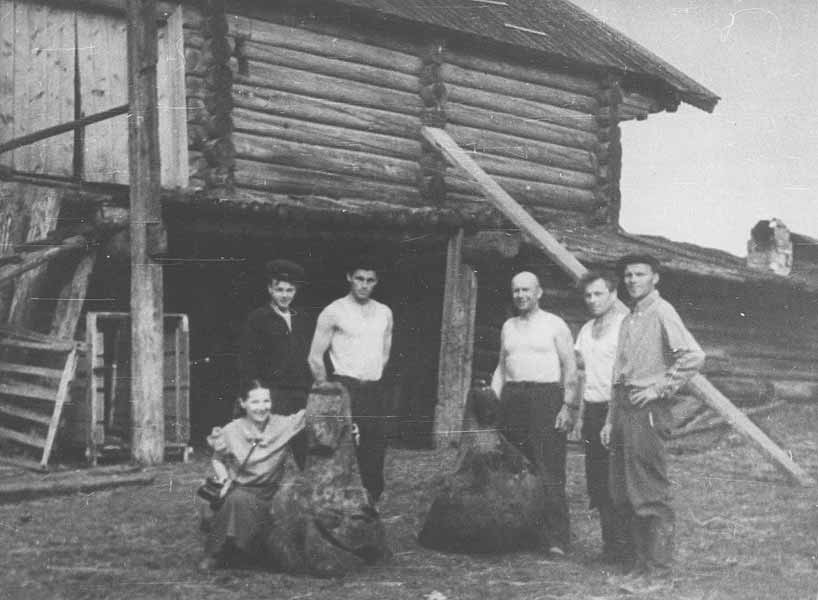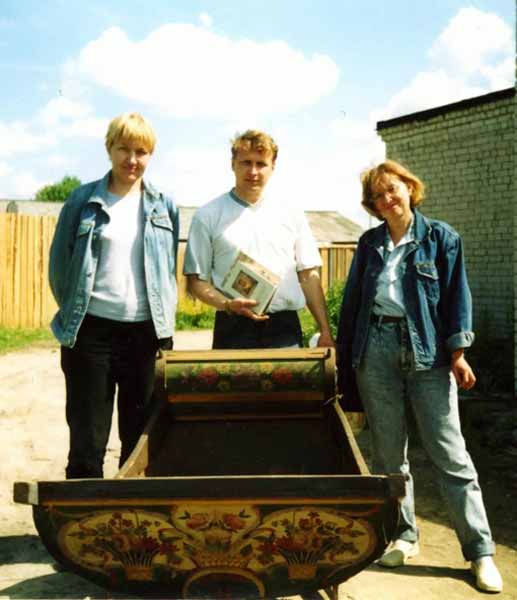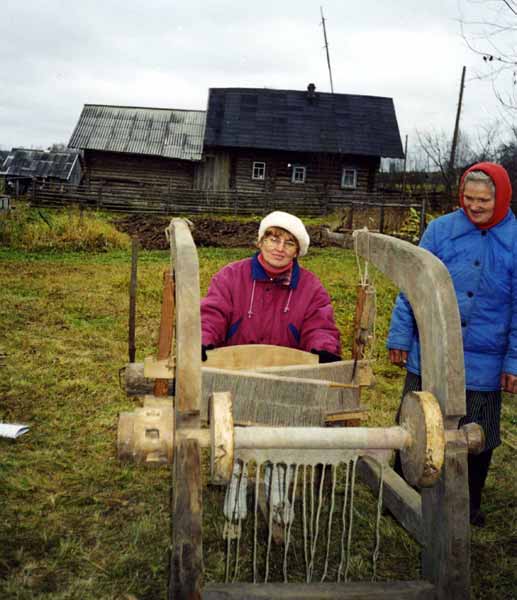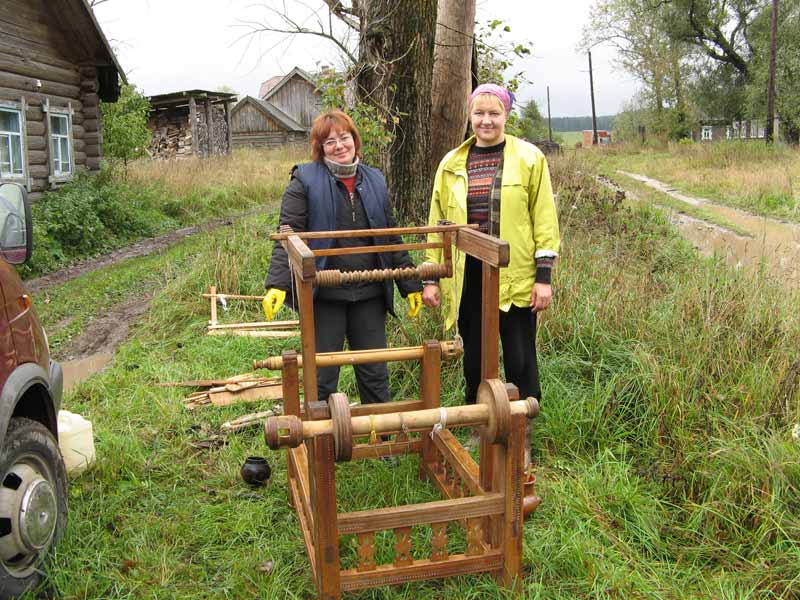Expeditions collecting monuments of history and culture
The Sergiev Posad Museum-Reserve is one of the few museums keeping the tradition of systematic expedition investigations of the folk art centers in European Russia which faded away, hardly surviving and still living. The expeditions are still sources of supplementing the collections of folk art. Between the 1950s and 1960s O.V. Kruglova and L.E. Kalmykova investigated the northern, north-western and upper Volga regions of Russia. The expeditions were always complex: they investigated all kinds of folk art. They gradually investigated one or several neighboring regions, carefully chose routes, studied the sources and literature on history of the villages and handicrafts. In the villages they collected the whole complex of information necessary for the scientific attribution of the finds.
The centers of folk art were thoroughly outlined on the maps. Such technique permitted, firstly, to form the collection including nearly all kinds of folk art; secondly, to provide each item with quite a precise scientific passport; thirdly, to use the acquired material for annotation of other collections. As the result of O.V. Kruglova and L.E. Kalmykova’s expeditions by the late 1970s the Museum possessed one of the best collections of northern distaffs, Tver and Novgorod embroidery, folk printed textiles and pottery.

The expeditions to the southern regions were specific. Those areas were remarkable for ethnic diversity. The single-yard settlements, marking the southern boarders, were formed of the representatives of Slavs, who lived there since the 6th – 7th century or moved from the central gubernias by the royal order, and also of Mordovians, Cossacs and, according to the documents, even of Poles and Lithuanians. Old believers kept ancient traditions as they were not communicable.
The expeditions of the 1990s had a difficulty. The Museum workers had to deal with the owners who often could not provide necessary information about items or gave information that was not precise. So, all data were to be checked and counterchecked. Between 1980 and 1995 V.M. Zhiguleva, S.V. Gorozhanina, L.M. Zaitseva, E.L. Kobylina, G.V. Sokolova, G.P. Cherkashina investigated the Penza, Tambov, partially Ryazan, Kursk, Belgorod Regions and the area at the foot of the Urals. They acquired a lot of exhibits (the Penza collection including over 900 items, the Tambov collection - over 600 items, the Ryazan collection – 1000 items, the Kursk, Belgorod and the Urals – 1000 items. The acquired collections gave a more comprehensive idea of folk art of the investigated areas, permitted to reconsider certain steps of its development , to make more precise attribution of the exhibits preserved in the Museum.


. The collected monuments helped to see a bright phenomenon of the area that absorbed the features of South Russian, Northern Russian and single-yard artistic traditions. Many costumes are unique. At present the Museum possesses a major collection of female mourning costumes of the late 19th – early 20th century.
Between 2001 and 2006 there were expeditions to the Samara Region (L.M. Zaitseva and T.A. Polosinova), to the Arkhangelsk and Vologda Regions (S.V. Gorozhanina and L.M. Zaitseva), to the Ryazan Region (G.V. Sokolova and V.V. Miroshina); to the Lipetsk, Orel and Tula Regions (V.M. Zhiguleva and V.V. Miroshina), to the Nizhni Novgorod Region (S.V. Gorozhanina and T.A. Polosinova). The collection was supplemented with more than 500 items made by folk craftsmen of wood, metal, clay, textile..

Thanks to the expeditions, the Museum possesses now one of the most complete collections of folk pottery in Russia, a first-rate collection of toys and sculptures, South Russia female costumes, embroidery and weaving, architectural carving, artistic woodworks of the 19th – 20th century. The main contemporary achievement is continuity of work. The collections, brought by the expeditions, are gradually systemized and presented to the scientific world. They are published in catalogues and albums, described in articles and reports, displayed at the exhibitions.








